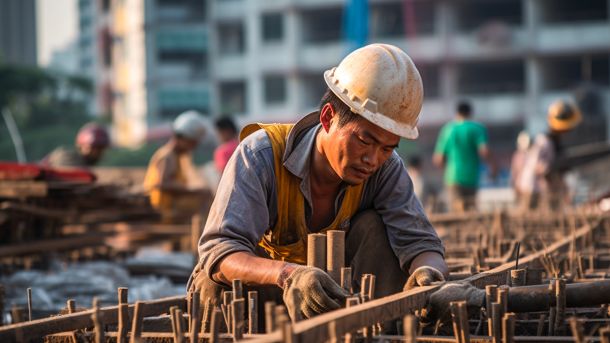Foreign Professionals Struggle to Thrive in Italy

Advertisement
Abhishek, a 26-year-old Indian migrant, earned a master’s degree in mechanical engineering from the Polytechnic University of Turin last year. Despite this, he was rejected for several positions due to his limited Italian. He eventually found an engineering job in the Netherlands, where he can communicate in English.
A Recurring Problem
Opportunities for foreign-born workers in Italy are scarce, due to a combination of factors such as a strict cap on work permits and a high level of citizenship. Unlike much of the West, it is rare to see migrants working as doctors, engineers, teachers, or in other skilled professions. This raises concerns for a country with a chronically stagnant economy and a rapidly aging and shrinking population.
Last month, the European Union’s statistics agency, Eurostat, reported that over 67% of non-European workers in Italy are overqualified, meaning they are stuck in medium or low-skilled jobs despite having a university-level education. This compares to an EU average of around 40%. Only Greece fared worse in the 27-member bloc, while France and Germany were between 30 and 35%.
Read also: Russia Constructs Significant Fortifications in Ukraine in Anticipation of Counter-Offensive
Barriers to Integration
For decades, Italian governments have failed to harness the skills of migrants and integrate them into the workforce, instead treating their arrival as a cause for alarm. Right-wing Prime Minister Giorgia Meloni announced an “emergency” on immigration this month following a sharp increase in flows across the Mediterranean.
Meloni rejects the idea that more migrant workers are the answer to Italy’s economic problems. “Before talking about immigration, we should work on the possibility of involving many more women in the labor market and increasing the birth rate, these are the priorities,” she told reporters last week.
In 2023, work permits will be granted to around 83,000 non-European migrants, according to government data, less than a third of the 277,000 who applied. Over half of the permits issued will be for temporary and seasonal jobs, and most of the rest for unskilled jobs such as factory work, with only 1,000 spots for highly skilled workers with qualifications from their home country.
Unrecognized Skills
Many who arrive in Italy are dismayed to find that recognition of their qualifications by employers is often a complicated and lengthy affair. Most professional guilds are open only to Italian citizens and have rigid requirements based on academic record, work experience, or entrance examination.
“Italian bureaucracy is very complex and difficult to interpret.”
Migrants could offset the country’s declining population and workforce, and could also help its fragile public finances, according to the Bank of Italy and many economists. However, for non-European migrants determined to settle in Italy, the path to citizenship is longer and more difficult than in most Western European countries, requiring them to be at least 18 years old and legal residents in the country for 10 years before they can apply.
Sociology professor Filippo Barbera, from the University of Turin, said the absence of migrants in skilled professions has become entrenched and difficult to reverse. “Migrants in Italy have virtually no access to the middle class,” he said. “This is partly a self-fulfilling prophecy. People are used to seeing them in subordinate jobs, so it becomes perceived as their natural place.”
This article was written based on information provided by Reuters news agency here.
Advertisement
Read next in World

International Investors Demand Concrete Steps to Restore Confidence in Chinese Real Estate Industry

West African Countries Impose Sanctions on Niger Following Coup

Turkish currency collapses by 7%, reaching an unprecedented level






